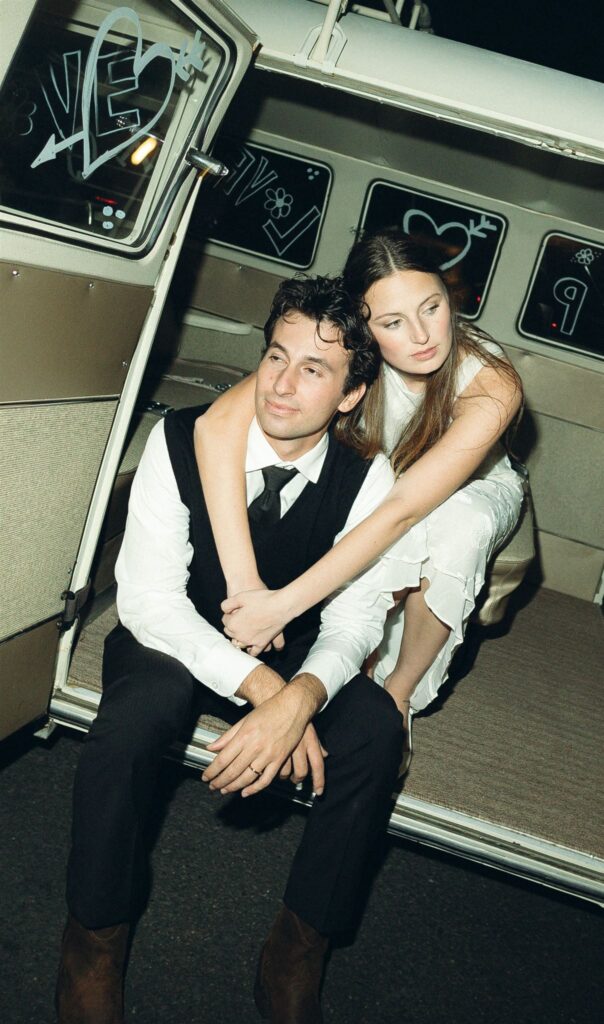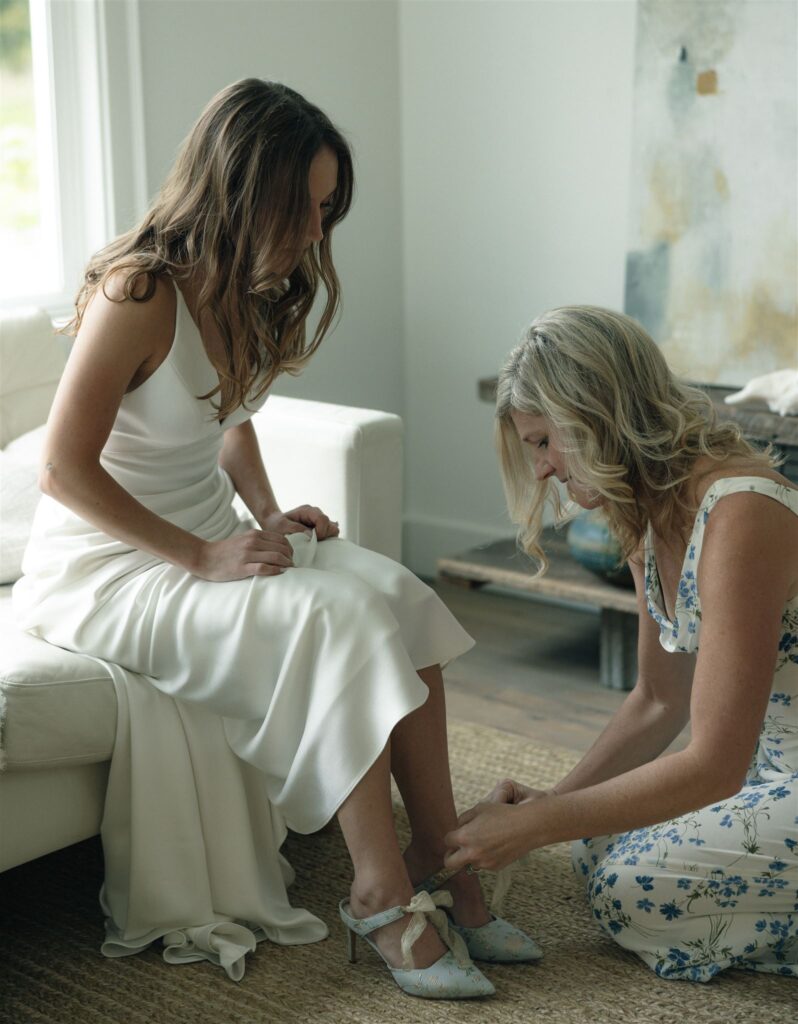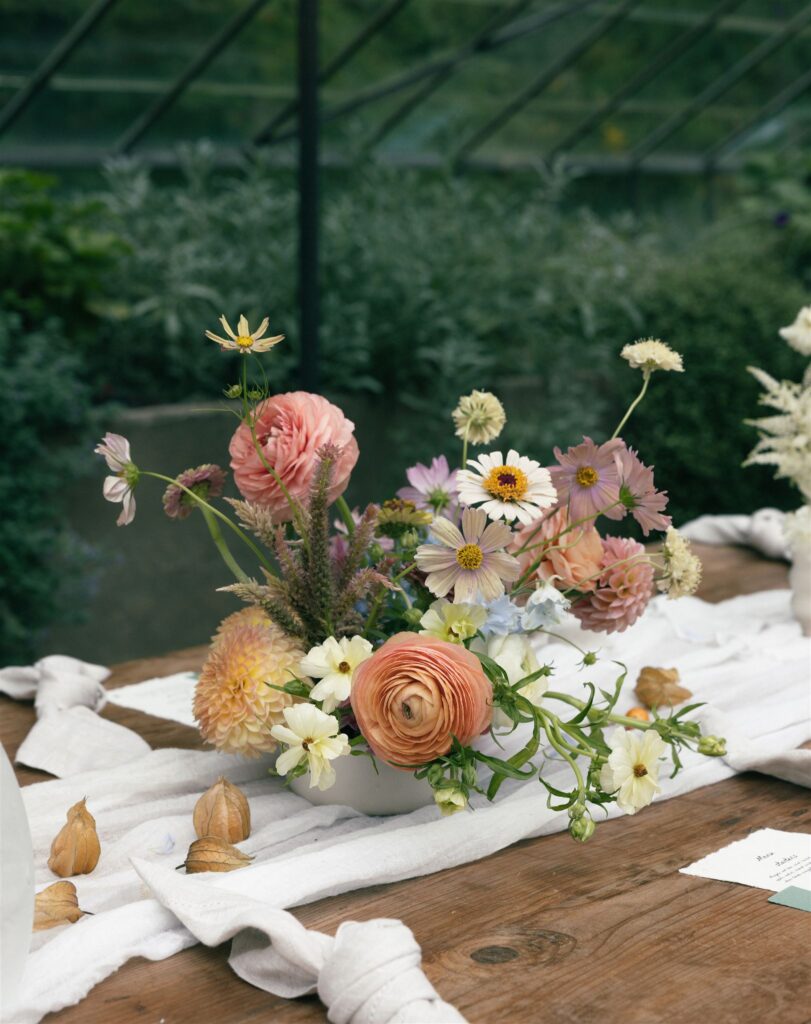Shooting your first wedding is exciting and nerve-wracking at the same time. If you’re reading this, you’re probably starting to freak out, knowing your first wedding shoot is approaching. But fear not—I have all the first wedding photography tips to help you go from a nervous wreck to a confident pro! Okay, well, I’m probably not a confident pro, but at least ready to take on your first wedding photography session!
Now, there’s a lot out there when it comes to first wedding photography tips, which is great, but my experience tells me a few tips require a little more attention than others.
In this article, I’ll help you better understand the essentials of wedding photography preparation, what you should do the day of, how to approach a wedding timeline, how to pose clients confidently, and lastly, how to set up a post-wedding routine.
Now, let’s get to the first wedding photography tips!
First Wedding Photography Tip #1: Accept the Nerves, Don’t Eliminate Them
“Doing the best at this moment puts you in the best place for the next moment.”
—Oprah Winfrey

Let’s start with the most obvious: You will feel nervous when you’re going to your first wedding. It’s not a question of if but of how intense.
The most essential tip I can share in this article is to accept your nerves, not try to get rid of them.
The first-time photographers who get into the most trouble are those who try to eliminate their anxiety altogether. The truth of the matter is you will never be able to fully get rid of your anxiety. I’ve shot hundreds of weddings, and sometimes I still get nervous. However, those who perform at weddings are those who accept their fear and move forward anyway.
The key for shooting your first wedding is to practice emotional preparedness before the wedding. In short, the longer you procrastinate because of your anxiety, the worse your anxiety is going to get.
So, let’s get into a few tips to prepare you emotionally.
- Communicate with the Bride and Groom: Effective communication best addresses first-wedding jitters. Often, when we are nervous, it’s because we don’t know what to expect. Because of this, I highly suggest setting clear expectations with the bride and groom. Some clear expectations include the photo delivery timetable, the wedding timeline, important individuals to capture, and any other logistics necessary enough to cover. If you’re unsure which questions to ask, check out my article on what makes a great wedding day questionnaire.
- Find a Helper: I highly recommend getting help. If you can afford a second shooter, great! If not, finding a friend to help you and provide moral support is a great way to boost your confidence. More on that below!
- Find Inspiration: As the saying goes, great artists steal. One of the best ways to consider how you want the photos to come out is to plan which poses you want to recreate. The best way to do that is to Google! Or check out my Instagram. Either way, the point is, when you see something that looks great, try to emulate it. When in doubt, save the photo to your phone for later inspiration.
First Wedding Photography Tip #2: Find Help Along the Way
“Be brave enough to ask for help, it is a true sign of wisdom”
– Confucius

As I mentioned earlier, finding a second shooter can be a great way to boost your confidence, get some help, and get extra shots during the wedding.
So, let’s discuss what to look for in a second shooter and, if you can’t afford one, how you can get some extra help.
What to Look for in a Wedding Day Second Shooter
When looking for a second shooter, it’s crucial to consider that you want your primary focus on the wedding, not the second shooter. If you are looking for a second shooter, the most essential characteristic is for them to shoot independently. The last thing you want to do is babysit your second shooter the entire wedding.
Additionally, your second shooter should also be proficient in handling their equipment. I know I said the last thing you want is to babysit your second shooter during the wedding; I fibbed; it’s looking through your second shooter’s photos only to find them out of focus.
While there are many other characteristics to look for in a second shooter, it boils down to the previous two; they can work independently and handle their equipment. However, a few other characteristics to look for include:
- They can take direction.
- They are reliable.
- They are creative.
If you can’t afford a second shooter, what if you bring a helper to the wedding? What should they do?
If you are bringing a helper to a wedding, a few ways they can help are:
- Keep track of time to stay on track.
- Carry and manage the equipment.
- Ensure you are fully stocked with memory cards and batteries.
- Tell you, you’re doing great!
That last one isn’t essential, but it’s great to remember. That said, be sure that your helper will actually help, not someone who is there just for moral support.
First Wedding Photography Tip #3: Get Inspiration
“If you hear a voice within you say, ‘You cannot paint,’ then by all means paint, and that voice will be silenced”
– Vincent Van Gogh

As I said earlier, one of the best ways to combat first-wedding jitters is to become accustomed to what your first wedding will look like. So, how exactly do you do that? You watch tutorials, find poses you’d like to emulate, read blog articles like this one, and, of course, if you can, practice (more on this later).
In today’s digital age, you can learn almost anything. Whether you want to learn how to create a website or shoot your very first wedding, so many of us are happy to share our insight and expertise.
If you are feeling a little overwhelmed by the posing side of this, I totally understand. Posing can feel especially tricky since you typically only meet the bride and groom before the wedding, not the entire wedding party.
If you have plenty of time before the wedding, I highly suggest taking a posing course to better understand how to pose individuals confidently.
If you don’t have a lot of time, don’t panic!
One effective strategy to shake off any nervousness about posing is to seek inspiration and emulate what resonates with you. As I’ve mentioned before, dive into social media if you’re hunting for posing ideas. Scour for poses you believe will highlight your clients at their best, and save these images on your phone. When unsure of the day, these saved poses can act as your go-to shot list for the wedding.
Let’s move on to the next way to get inspiration; your own.
While you may feel unsure about your first wedding, the best way to overcome that apprehension is to experience it. However, you can’t just go out one day and shoot a wedding. Instead, I suggest you do a test shoot with a couple in a style you want to emulate.
Of course, you won’t have the craziness of the wedding day, the barrage of people to photograph, and the intricacies of someone else’s wedding. However, you do have the opportunity to better understand your camera, how to search for angles and ways to edit your photography post-wedding. If possible, try to shoot at a time of day and location in which you will be shooting.
First Wedding Photography Tip #4: Create a Checklist
“No wise pilot, no matter how great his talent and experience, fails to use his checklist.”
– Charlie Munger

Our brains are excellent at processing patterns, logic, and information, remembering on the other hand; we’re not the best at that.
The truth is, you won’t remember everything. Because of how our brains are wired, I’m a big believer in creating checklists. One of the best ways I was able to overcome my first-wedding anxiety was to create a checklist of all the things I needed to do and remember the day before the wedding, the day of the wedding, and the time period after the wedding.
Once you have your lists, you start on your to-do’s one at a time.
So, what should be on your checklist for the day before the wedding photography session?
Charge All Equipment: Ensure all camera batteries are fully charged, and pack extra just in case.
Clean Your Gear: Clean your lenses and camera sensors to ensure crisp, clear photos.
Check Memory Cards: Format your memory cards and bring spares so you never run out of space.
Review the Shot List: Review any requested shots or special moments the couple wants captured to ensure nothing is missed.
Scout the Location: If possible, visit the venue to identify the best spots for shots, considering lighting and background.
Coordinate with Other Vendors: If possible, touch base with the wedding planner, videographer, and DJ to align schedules and avoid clashes.
Pack Your Bag: Besides your camera gear, include snacks, water, a backup outfit, and basic first aid.
Plan Your Outfit: Choose something comfortable and professional that blends with the wedding’s style and allows you to move around quickly.
Confirm Timings and Details: Double-check the start times, venue addresses, and critical details with the couple or planner.
Get a Good Night’s Rest: You need to be sharp and energized, so rest well the night before.
But what about the big day?
Here’s a streamlined day-of checklist to ensure you’re entirely prepared to capture every beautiful moment of the wedding:
Arrive Early: Get to the venue early to absorb the setting and make any last-minute adjustments.
Check Your Gear: Do a final check on your camera equipment to ensure everything functions properly.
Meet the Key People: Introduce yourself to the wedding party, family members, and key guests, knowing who helps manage group shots more effectively.
Capture Preparations: Document the behind-the-scenes moments of both partners getting ready—it’s where you’ll find most of the day’s shots.
Follow the Schedule: Keep a copy of the wedding timeline handy to capture events and stay on track.
Stay Hydrated and Energized: Keep water and snacks with you to stay hydrated and maintain your energy throughout the day.
Communicate with the Videographer: Coordinate with the videographer to ensure you’re complementing each other’s work and not getting in each other’s shots.
Check the Light: Constantly adjust your settings to adapt to the changing light conditions, especially during outdoor events.
Take Backup Shots: Take a few extra shots of key moments, just in case.
Be Adaptable: Be prepared to capture unexpected moments and go with the flow, adapting as needed to the day’s dynamics.
First Wedding Photography Tip #5: Get to Know Your Equipment
“There are always two people in every picture: the photographer and the viewer.”
– Ansel Adams

While some get nervous about the human element of shooting a wedding, others get nervous due to the equipment. What camera should you use? Do you need to rent different equipment? How do you handle the lighting?
While all of those are very valid questions, and I will answer each of them, remember, keeping it simple so you can be present in the moment is crucial.
However, let’s get into the nitty gritty of your equipment.
What kind of camera should you use for your first wedding shoot?
When choosing a camera for wedding photography, there are a few key features you need to ensure the best results. First, prioritize image quality—look for cameras that offer high resolution and excel in low-light conditions. Wedding venues can range from sunlit gardens to dimly lit ballrooms, so your camera needs to handle all lighting scenarios with minimal noise. Next, a fast and reliable autofocus system is crucial. Weddings are fast-paced events with lots of movement, and you need to capture those fleeting, sharp images without missing a beat.
Another must-have feature is dual card slots. This allows you to back up images in real-time by writing to two cards simultaneously—an essential safeguard for once-in-a-lifetime moments that you can’t afford to lose. Also, ensure your camera has a strong battery life or spare batteries. You’ll likely be shooting for many hours, and the last thing you want is to run out of power during intimate moments.
Finally, consider the ergonomics and weight of the camera. It should feel comfortable in your hand, as you’ll hold it all day. A camera that’s too heavy can lead to fatigue, which might affect your performance. Opting for a camera that balances well with your physical needs will help you stay mobile and ready to capture every moment.
A few cameras that work great for beginners are:
Nikon D850 or Nikon Z6: Both are excellent wedding choices, offering robust autofocus systems, high image quality, and dual card slots (D850). The Z6, being a mirrorless camera, is lighter and suitable for quieter shooting.
Canon EOS 5D Mark IV or Canon EOS R6: These cameras are popular among wedding photographers for their reliability, high image quality, and effective autofocus. The EOS R6 also offers impressive low-light performance.
Sony a7 III: This mirrorless camera is well-regarded for its compact size, exceptional autofocus capabilities, and high-resolution sensor. It’s also good in low-light situations and has dual card slots.
Fujifilm X-T4: For those preferring a more petite, mirrorless option, the X-T4 offers excellent image quality, a fast autofocus system, and a unique film simulation mode, useful for creative wedding shots.
What equipment should you rent for a first wedding shoot?
There’s no shortage of items to rent in the wedding photography industry. In fact, you can go broke renting out the latest and greatest gear. In all likelihood, for your first wedding, you want to be lightweight in your equipment. The last thing you want is to obsess and fret over equipment that either isn’t working/or you don’t feel comfortable using.
However, if you do need extra equipment, you’ll most likely want to look into the following:
High-Quality Lenses: Depending on the type of shots you anticipate, renting lenses can significantly enhance your photography without the commitment of a large upfront purchase. Consider fast prime lenses for low light and beautiful bokeh, such as an 85mm f/1.4 or a 50mm f/1.2. Wide-angle lenses like 24-70mm f/2.8 are excellent for capturing large groups and landscapes.
Lighting Equipment: Proper lighting is essential for indoor venues or late-evening events. Consider renting off-camera flashes, softboxes, or LED panels to enhance your lighting capabilities. A portable flash with a diffuser can also be invaluable for softening harsh shadows during bright daytime events.
Memory Cards and Batteries: While not as expensive, renting extra high-capacity memory cards and batteries can ensure you never run out of storage or power at critical moments.
Reflectors and Diffusers: These help manage natural light, especially for portraits and outdoor shots. They help to balance the lighting on your subjects, reducing harsh shadows and enhancing the overall quality of your images.
Putting it All Together
Undertaking your first wedding photography shoot can be as exhilarating as daunting.
Armed with the tips and insights in this article, you’re better equipped to transform those jitters into a poised readiness to capture beautiful, memorable moments. From managing pre-wedding nerves with clear communication and strategic preparation to mastering the day with effective equipment and personnel, you have a roadmap to success.
Remember, the key isn’t to eliminate your nerves but to harness them into focused energy that enhances your creativity and attentiveness during the shoot.
Embrace the chaos and unpredictability of the day as part of the beauty of wedding photography.



Each event is unique, and with the right preparation, including understanding your equipment and having the necessary backups like lenses and batteries, you’re setting yourself up to capture the essence of the celebration.
Additionally, finding inspiration and understanding the flow of the day will enable you to anticipate and capture those fleeting moments that define the emotional depth of the wedding. Keep those saved poses ready, interact seamlessly with other vendors, and, most importantly, stay energized and hydrated!
As you continue this exciting journey, remember that each wedding is an opportunity to refine your skills. No one is born an expert in anything, and you should view each wedding as an opportunity to improve.
With these foundational tips embedded in your approach, each snapshot you take captures a moment and tells the unique story of the couple’s special day.
If you want extra help before your first wedding, schedule a one-on-one mentoring session with me. I would love nothing more than to help you gain the confidence to step into your first wedding and deliver incredible results.

View comments
+ Leave a comment